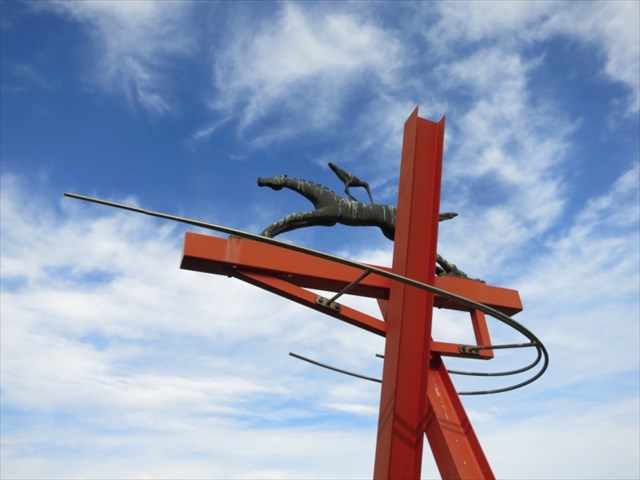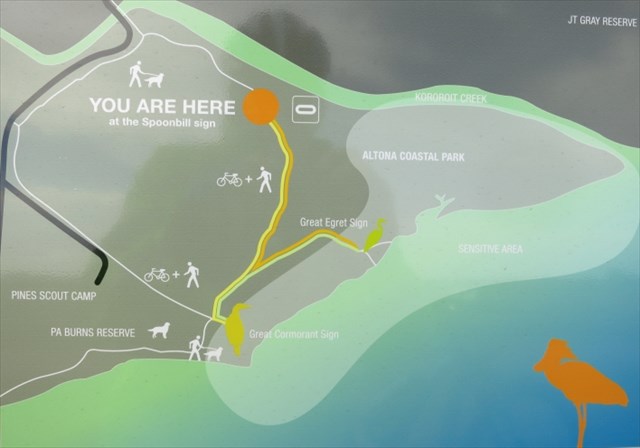Altona Coastal Park
This 70 hectare park comprising of woodlands, grasslands, and saltmarsh vegetation is home to a variety of native plants and wildlife. At low tide, the seawater recedes and the coastal mudflats are exposed, providing feeding grounds for the migratory and resident shorebirds.
149 bird species have been recorded here, of which 32 are listed as important species. This area of Port Phillip Bay is an internationally significant wetland site because it supports a diverse range of birds.
Such sites, known as Ramsar wetlands form a part of an international treaty for the conservation of coastal areas which help in the protection of migratory shorebirds.

Start/Parking
S37 51.390 E144 51.211
This is the start of the trail. If you are approaching from the north there is a ford to cross. Usually, this is dry (despite what the road sign says), but if it is covered, please don't try and cross it. I have seen a Mercedes-Benz stranded in the middle of the flow.

Spoonbill Sign
S37 51.471 E144 51.389
This is what remains of the old grandstand of the racecourse, and is your first information board.
Sharp Tailed Sandpiper grows to AB0mm in height
The Royal Spoonbill can grow to CD0mm in height
There is a path to the second way point, please do not head across country, it will damage the plants.
Great Egret Sign
S37 51.671 E144 51.577
Many migratory birds feed on insects, small worms and a variety of molluscs and crustations.
The Bartailed Godwit seems to like just poking his beak into the mud, the other three go for food.
Which likes molluscs? E=
1. Curlew Sandpiper,
2. Oystercatcher, or
3. Red-necked Stint
Great Cormorant Sign
S37 51.769 E144 51.388
In the flight path know as the East Asian-Australasian Flyway, migratory birds can fly a round trip of up to FG,000km each year.
How long can a Great Cormorant stay under water for? H= one, two or five minutes at a time.
Take a seat nearby and enjoy the view while you do your calculations.
The Final
S37 51.(C-H)(G+E)(D) E144 51.(H+F)(C)(B-E)
Hope you enjoyed the walk/ride and the views.